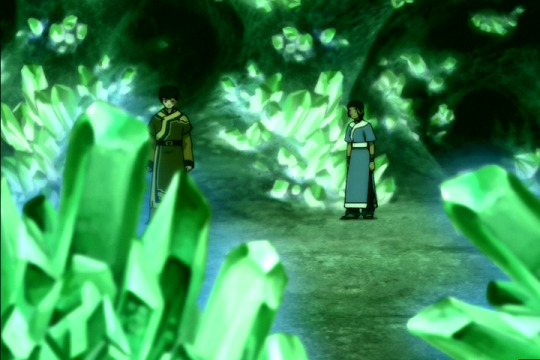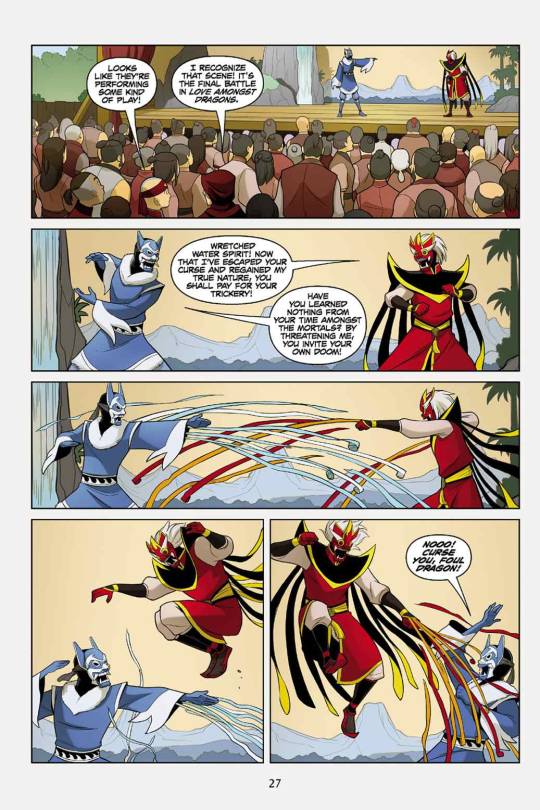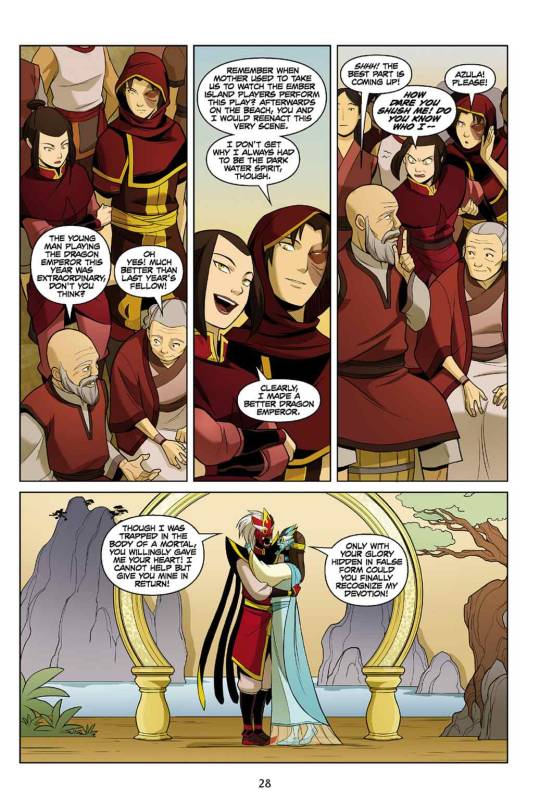#the world doesn’t need the avatar. it needs the author of Love Amongst Dragons leading Zuko thro hell.
Text
why didn’t Zuko do something actually productive during his banishment. like write the alta version of the divine comedy.
#he could’ve poetically trauma dumped on SO MANY PPL. the LORE he would’ve created out of his teenage angst would’ve changed the world#the world doesn’t need the avatar. it needs the author of Love Amongst Dragons leading Zuko thro hell.#he would’ve (accidentally) put so much Ozai=devil=tortured children and tormented sons=evil in there#and literally ended the fire nation. there. i said it. everyone would be quoting his work and it would literally be argued ab by scholars#til the end of time and all bc Iroh was going thro Zuko’s shit and found a whole ass angsty manuscript (that was never meant to see the#light of day) and sent it around to all his friends (the white lotus) bc look at what his nephew wrote! he’s a little writer!!! so much#talent!!!!!#and they would read it and be like ‘god? is that you??’#atla#zuko
15 notes
·
View notes
Text
Zutara Month Day 10: Oma and Shu
I’ve seen some people point out that Zutara doesn’t necessarily fit Oma and Shu because the Oma and Shu myth is more Romeo and Juliet than enemies to lovers, and those people are not necessarily wrong. Romeo and Juliet, just like Oma and Shu, were never themselves enemies. They did nothing but love each other, but were forbidden from being together because of the feud. Zutara, in most interpretations, is less a “forbidden” romance and more a transition from enemies to friends to lovers. Most people imagine them growing to love each other after becoming friends, often after Zuko’s redemption and the end of the war. Nonetheless, the Oma and Shu story does share several parallels with Zutara that many fans have picked up on. What I want to do is examine some of these parallels from a meta angle, to look at the Oma and Shu story as it appears in the series and other similar stories that appear in ATLA, and to also compare them to similar stories in the real world, and analyze a bit the popularity of these various tales of forbidden love, why they are popular, and what their purpose is, as well as how Zutara fits into all this.

In universe, the Oma and Shu story, in addition to being a love story, is also an origin myth of sorts for the Earth Kingdom. It explains the creation of the city of Omashu, as well as telling the story of some of the first humans to learn earthbending. The message of the story, in addition to being a tale about love thriving between two unlikely people, and a cautionary tale about what happens when love is prevented from flourishing, is also a message about love being an act of creation and a force of transformation.
Love is brightest in the dark.

This sentence is a paradox, but it fits with the theme of balance that the show comes back to again and again, of breaking down barriers and deconstructing dichotomies to create something new, something more whole than the original. Something mirroring the harmony of yin and yang.
The greatest illusion of this world is the illusion of separation. Things you think are separate and different are actually one and the same. We are all one people, but we live as if divided.
The above quote by Guru Pathik is also similar to Iroh’s philosophy, which he tries to teach Zuko.
It is important to draw wisdom from many different places. If you take it from only one place, it becomes rigid and stale. Understanding others, the other elements, and the other nations will help you become whole.

Iroh also says something in “The Crossroads of Destiny” that echoes the Oma and Shu story.
Iroh: Perfection and power are overrated. I think you were very wise to choose happiness and love.
Aang: What happens if we can't save anyone and beat Azula? Without the Avatar State, what if I'm not powerful enough?
Iroh: I don't know the answer. Sometimes, life is like this dark tunnel. You can't always see the light at the end of the tunnel, but if you just keep moving, [Aang earthbends the rocks away one last time. Iroh's fire blows out. He smiles.] you will come to a better place.

Iroh says that Aang is wise to choose love over power, while walking through a dark tunnel, and advises Aang to trust in the darkness to bring him to the light. Meanwhile, Zuko and Katara, two people on opposite sides of a war, share a moment of unlikely tenderness in a cave lit by glowing crystals.

Zuko in the crystal catacombs does what Iroh has been trying to teach him to do, to let go of pride and the need for power, and to instead embrace compassion and humility. Which is what he does when he apologizes to Katara. This is also part of what stories like Romeo and Juliet teach us, that pride and petty grievances are destructive, and that only by embracing love do we become whole.
I know the prompt is Oma and Shu, but thinking about that story and its place in the narrative made me think about other mythic stories that appear in the series, so let’s look at another one that has significance for zutara: Love Amongst the Dragons, Ursa’s favorite play that she took young Zuko and Azula to see every year.

The actual story of Love Amongst the Dragons, according to the ATLA wiki, is this:
The play features the Dragon Emperor, bound to mortal form by the Dark Water Spirit, and forced to adopt the alias of Noren. The humble experience results in Noren falling in love with a mortal, and through this love he is able to break free of his curse. The play concludes with Noren defeating the Dark Water Spirit and embracing his mortal girlfriend, revealed to be the Dragon Empress.
What struck me when I found this description was that this is, with some slight changes, pretty much the Chinese myth of the marriage between Dragon and Phoenix, a representation for yin and yang and harmony in marriage, and which I compared in a meta to zutara as well.

Like the Oma and Shu story, it is a story about unlikely love, and about crossing divisions. It also has a lot of similarities with various myths involving shapeshifting love-interests, often referred to as “animal bride/husband” myths (which beauty and the beast is a subset of).
The symbolism of the tale in-universe is in its connection to Ursa, and thus Zuko’s connection to his mother. Zuko’s connection to his mother is contrasted with his connection to his father, which is representative of Zuko’s destructive side. When Zuko was trying to capture the Avatar, he was searching for his father’s approval, to become someone that would earn his father’s love. Ursa, meanwhile, taught Zuko kindness and compassion, and told him that it didn’t matter that he wasn’t the most powerful or strong. That Ursa took Zuko to see this particular play is significant, a play about a godlike being, the Dragon Emperor, being humbled and learning to love.
Only with your glory hidden in false form could you recognize my devotion.
Though different, and originating in a different nation, this is another tale about love shining through the dark, about letting go of pride and choosing compassion. Animal bride/husband myths are often about seeing past what is hidden to see the truth. They are stories of transformation, and like the Oma and Shu story, are about the transformative power of love.
It’s also from this play that Zuko gets his Blue Spirit alter ego, which Zuko uses as an exploration of his own identity apart from being the Fire Nation prince. In this story the same mask is worn by the villainous Dark Water Spirit. It is very interesting that Zuko uses an identity associated with water for this purpose. Also, like the Blue Spirit, the Dark Water Spirit seems to be a bit on the morally ambiguous side. Even though the spirit is defeated at the end of the story, its motivation for transforming the Dragon Emperor seems to be to teach him humility, and this is a message the play seems to promote.
Zuko and Azula’s dialogue from the above comic pages is interesting because it expands on what we already know about both characters. Zuko complains about always having to play the villain, just as he was made a scapegoat by his father and sister, and his adapting of the Blue Spirit identity is essentially him reclaiming that identity that was forced on him while trying to figure out who he really is. Azula sees herself as the Dragon Emperor, but she misunderstands the message of the story completely, and it’s not a coincidence that she talks over the love scene in the comic above and responds angrily and pridefully to the man who tries to shush her. Similar to Ozai when he names himself the Phoenix King, ironically misinterpreting the actual myth. I also think there’s something interesting to say about gender here, as this post points out. Not only does Ozai associate himself with a female figure, but Azula associates herself with the male Dragon Emperor, while Zuko is associated with the more feminine water spirit (water being a feminine element.) However, by the end of the series, Zuko embodies the transformed Dragon Emperor, while Katara I associated before with the Phoenix/Dragon Empress, as she is associated with healing and rebirth. Also notice the red and blue color coding in the comic page above, both with the Water Spirit and Dragon Emperor and in the coloring of the two lovers.
This also brings me to another play present in the series, the play that the gaang goes to see performed by the Ember Island Players. The same players that Zuko says his mother took him to see. The play we see them put on in the series is a Fire Nation propaganda play, promoting Ozai and the war. I actually can’t imagine that Love Amongst the Dragons, a play about a Dragon Emperor learning humility, was very popular during Ozai’s reign. We hear about it being performed before Ozai became Fire Lord, but we can assume that those visits to the theatre stopped after Ursa’s disappearance. The only other time we hear about that particular play being performed is after the end of the war. This leads me to imagine that it was necessary for the Ember Island Players to find a different play to perform while Ozai was in charge. While the play is not necessarily subverting Fire Nation superiority (the villain is a water spirit, after all), it is confrontational enough that I can imagine Ozai’s brand of narcissism seeing it as a challenge to his authority. Ozai who disdained love in favor of power and control.
“The Boy in the Iceberg” contains another love story between two people from opposite sides in their depiction of Zuko and Katara in the crystal catacombs. I wrote before about how I’ve seen interpretations of this that say that the Fire Nation was trying to portray zutara as an “inferior” Water Tribe woman falling for a “superior” Fire Nation man - essentially saying that the play is in favor of zutara as a piece of Fire Nation pro-colonization propaganda - but the problem with this is that that isn’t how zutara is depicted in the play. The play mocks zutara by portraying Zuko as submissive and subservient to Aang, and Zuko is later killed, as he is currently a traitor and threat to the Fire Nation. Thus, the “romance” between Zuko and Katara is not being depicted as supporting the superior masculinity of Fire Nation men, but rather portraying Zuko, who willingly chose to dissasociate himself with the Fire Nation, as emasculated and submissive to other, “lesser” men and aggressive “foreign” women.
This is a complete mockery of the real connection that Zuko and Katara had in the catacombs, the kind of love that is inherently subversive because it requires Zuko humbling himself in front of Katara and admitting that he was wrong, and working for her forgiveness. It is the kind of love that the Fire Nation under Ozai’s rule rejects. The kind of love that is truly transformative, revelatory, and brings light to the darkness. The kind of love that creates rather than destroys, that unifies rather than divides. That is humble and not prideful. That’s the appeal of zutara.
#zutara#zuko#katara#zutara month 2021#atla meta#the cave of two lovers#the crossroads of destiny#the ember island players#oma and shu#love amongst the dragons
290 notes
·
View notes